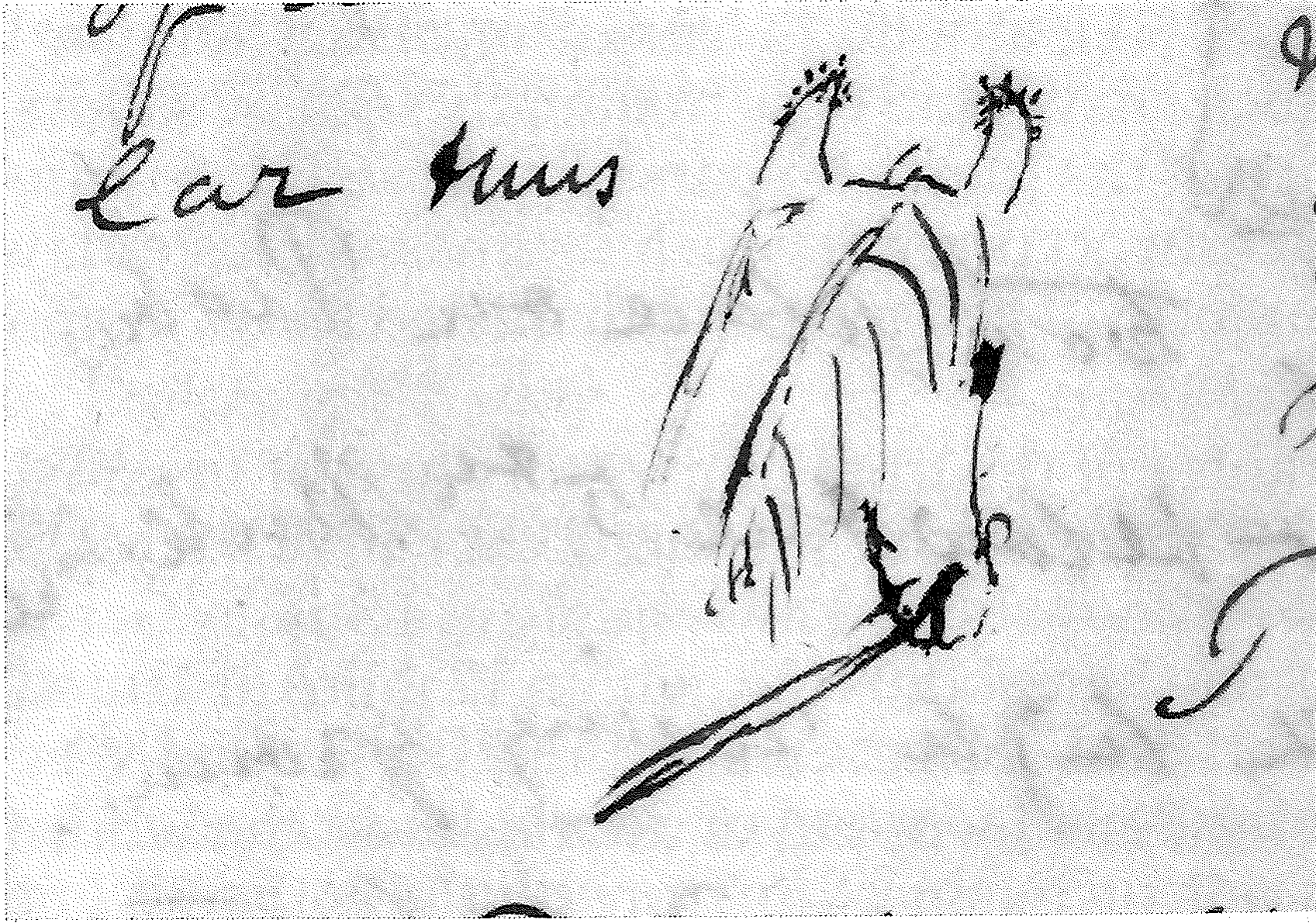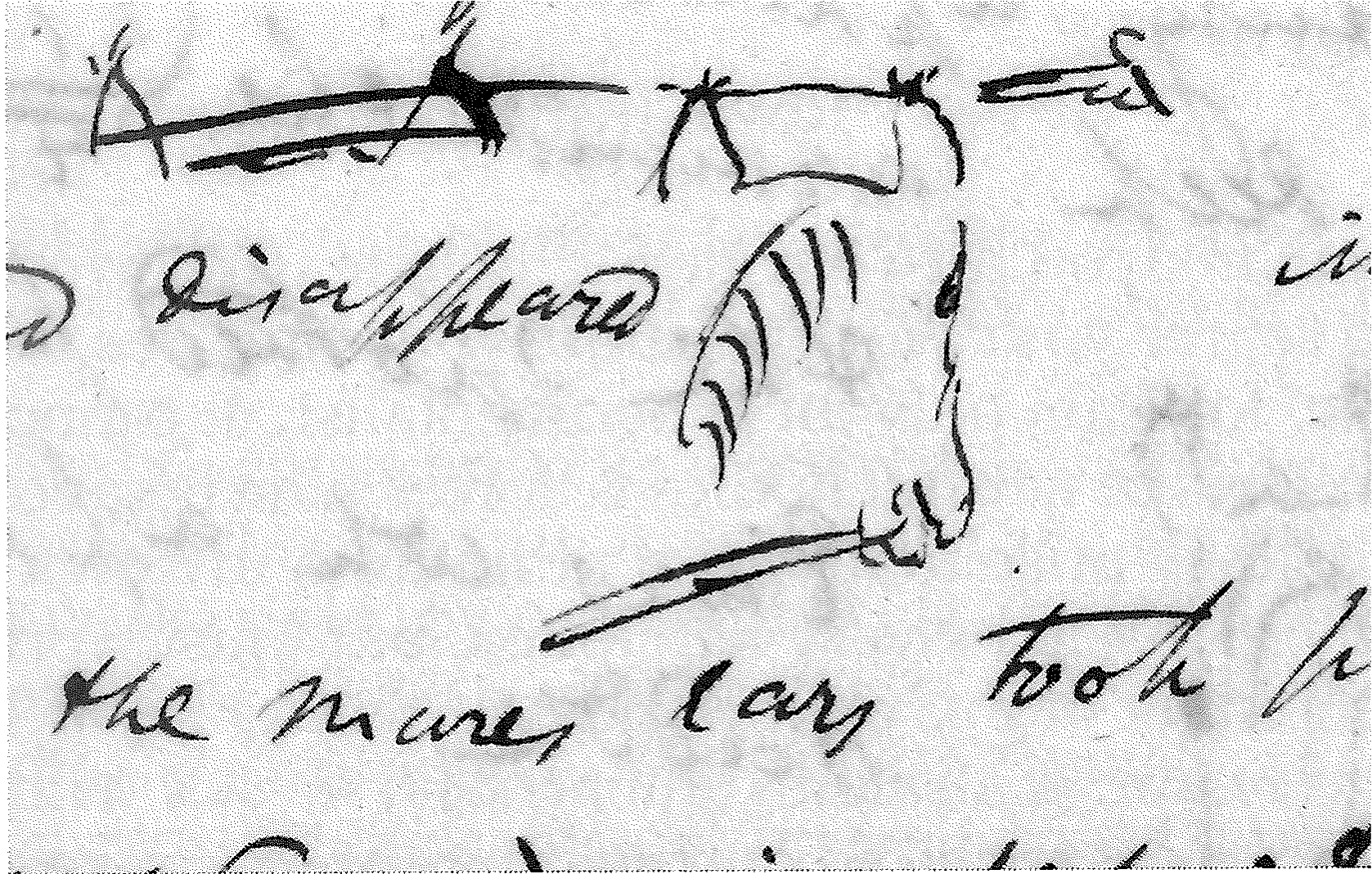Edward Brown Fitton to Faraday 27 December 18561
St Ewe | St Austell | Cornwall | December 27. 1856
To Michael Faraday Esqre D.C.L &c &c
Sir
Although very probably I am about to describe to you an occurrence with which you are perfectly familiar as an Electrical Phenomenon yet as it is possible that you have never witnessed or had related to yourself an occurrence such as I am about to describe to you viz a luminous ball or halo of Electric fluid playing around to ears of an animal [similar I suppose to the balls of light which I have read of as frequently seen by sailors, during storms, at the extremities of the Masts & spars of a vessel]2 I venture to write to you the details of such an occurrence which I witnessed yesterday December 26th during a severe storm of hail mixed with melted snow, at about 5h.15m P.M. within ½ a mile of Truro.-
As a guarantee of the truth of my story and of my own existence if the story is incredible to you I may mention that I am a son of Dr Fitton3 whom I believe you know and who is now residing at 4 Sussex Gardens Hyde Park[.]
Christmas day hereabouts (ie within 12 miles of Truro Cornwall -) was frosty with a good deal of sleet & snow and the ground very hard frozen on the morning of the 26th. I was out of doors almost the whole day from 10 till dusk having to ride on business to Truro on the 26th and I noticed that there was scarcely any actual Thaw altho frequently there were severe showers of melting or only half frozen snow. I left Truro on my way home to St Ewe at precisely 5h.5m P.M. being mounted on a tall mare nearly 16 hands high[.]
A steep hill leads out from Truro for about ½ a mile on the Main road along which I was riding to St Ewe. The top of this hill lies N.W of the Town of Truro & the road is then almost flat for about ½ a mile it being at this part a bleak unsheltered tract of land and almost the highest spot of ground within a quarter of a mile in all directions[.]
Just as I reached this flat part of the road we (I & the mare) were overtaken - (i.e. as I rode it came sideways but more in our faces than on our left side) - by a very violent storm of sleet which did not lie hard & white upon the ground but appeared to thaw as it fell. This lasted for about 4 or 5 minutes & came from the N.W. or more North than west and was accompanied by dim flashes of lightning and sharp gusts of wind[.]
My mare almost refused to face the storm & made very slow progress as against the drifts of sleet which were beating violently in her & my face. In a few minutes, perhaps 2 or 3, after the commencement of this storm I noticed a bright appearance on the top & edges of my mares ears. I felt certain at once that this was occasioned by Electricity in the Atmosphere but as it might be possible that I was mistaken I stooped forward in the saddle & wiped each ear with my fingers to make sure that the brightness I saw was not white sleet frozen on the edges of her ears[.]
The Ears like all the rest of the mares body were dripping wet but no snow at all remained unthawed on her body or on my garments and I was now quite positive that the brightness on the tips of each of her ears was caused by Electricity[.]
The light only appeared at the edges & tip perhaps for about ⅛th of an inch deep around the quarter of an inch forming the extremity of each ear thus
 the spotted portions in the sketch being the part of the ears wh appeared luminous.- to me as I sat in the saddle[.]
the spotted portions in the sketch being the part of the ears wh appeared luminous.- to me as I sat in the saddle[.]
This bright light like a glowworm’s light or Phosphorous on the wall of a dark room only whiter I think than Phosphorous but more dim that Electric sparks which I have often seen from a Machine remained steady & unflickering while we walked (for the mare would not go faster in the face of the storm) for a full 6th of a mile I should say for at least 4 or 5 minutes judging by the distance we passed over - During this time there were one or two bright flashes of lightning but I could not hear any thunder and the light on the mares ears continued for a minute or so after the storm of sleet had ceased. then there was a large sheet of lightning but less bright than the flashes which had preceded it and the mares ears lost their light gradually the loss decreasing for a moment or two longer than the lower portion which had been brightened.
During the continuance of the light I repeatedly stroked the mare’s ears with my hands on which I wore leather gloves (of course wet through) but the light was not imparted to the glove - nor did I feel any sensation at all - in fact the light on the mares ears was entirely unaffected by my handling her ears.-
There were several sharp bursts of similar storms during my journey home &
once again at about 5.40 PM I noticed a faint light as before but now only at
the extreme tip of the mares ears[.]
 This time the light only lasted for about half a minute and
disappeared immediately after a faint flash of lightning[.]
This time the light only lasted for about half a minute and
disappeared immediately after a faint flash of lightning[.]
This second occurrence of the light on the mares ears took place on Probus Hill (Track Hill about 5 miles out of Truro) just below the 5th Milestone from Truro. a bleak unsheltered portion of road & high rising ground. I may mention that the bits of my bridle and also my stirrups are galvanized to protect them from rust and all the buckles are plated so that there was no steel surface exposed to attract Electricity[.]
I was protected from the cold by a Seal skin coat with the fur outwards but altho I expected to notice some similar luminous appearance, on the extremities of its hairs, to that which had attached itself to the points of my mare’s ears I could not distinguish anything of the kind[.]
It is very probable that the Phenomenon I have detailed may be familiar to you, in which case I hope you will forgive the liberty I have taken in addressing you as a gentleman of scientific repute throughout the world on matter the exact similitude of wh I have never heretofore heard or read of & I remain Sir yours obediently Edward Brown Fitton
Please cite as “Faraday3215,” in Ɛpsilon: The Michael Faraday Collection accessed on 29 April 2024, https://epsilon.ac.uk/view/faraday/letters/Faraday3215